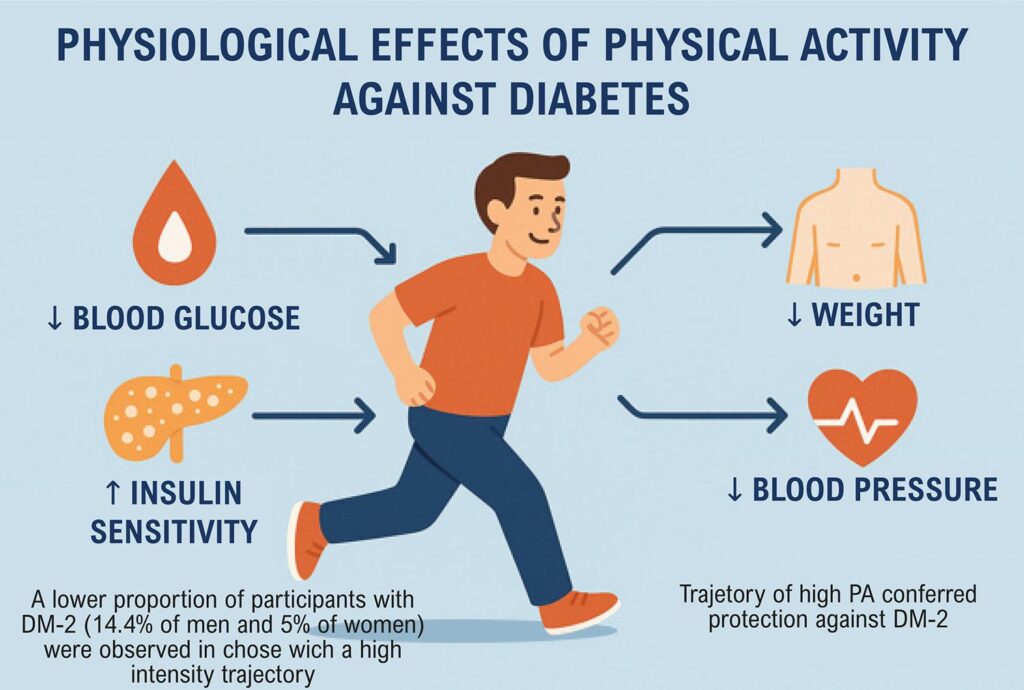Arq. Bras. Cardiol. 2025; 122(8): e20250091
Dose-Response Association between Leisure-Time Physical Activity Intensity Trajectories and Diabetes among Men and Women in ELSA-Brasil
This Original Article is referred by the Short Editorial "The ELSA-BRASIL Study and Physical Activity in Protecting Against the Development of Type 2 Diabetes".
Abstract
Background
Physical activity (PA) plays a fundamental role in the prevention of type 2 diabetes mellitus (DM-2). However, findings regarding the influence of PA intensity on DM-2 over time remain inconsistent.
Objective
To examine the dose-response association between leisure-time PA intensity trajectories and DM-2.
Methods
The study included data from the Longitudinal Study of Adult Health (ELSA-Brasil), at baseline (2008-2010) and from 11 years’ follow-up, of 5777 women and 4590 men, aged from 35 to 75 years. Leisure-time PA intensity trajectories were assessed by means of the International Physical Activity Questionnaire, while DM-2 was identified by self-reporting, use of medication or laboratory criteria. Ordinal logistical regression was used to estimate odds ratios (OR) and 95% confidence intervals (95%CIs).
Results
A lower proportion of participants with DM-2 (14.4% of men and 5% of women) and a higher proportion without diabetes (22.1% of men and 40.8% of women) were observed in those with a high-intensity trajectory. Compared to the moderate-intensity trajectory, high-intensity conferred protection against DM-2 (OR=0.63 [95% CI=0.40-0.98]) for men and women (OR=0.33 [95% CI=0.14-0.79]) and the low-intensity trajectory conferred a greater chance of pre-diabetes among men OR=1.36 [95% CI=1.09-1.69].
Conclusion
Higher-intensity PA over time was associated with a lower proportion of DM-2 cases among men and women. Thus, programs aimed at preventing and controlling DM-2 should emphasize the importance of maintaining high-intensity activities over time.
315

